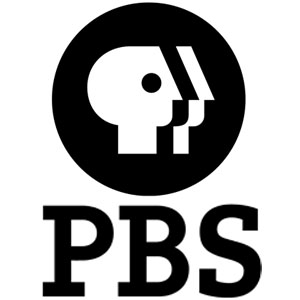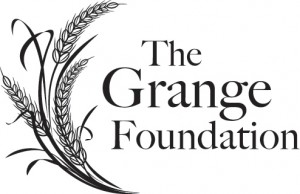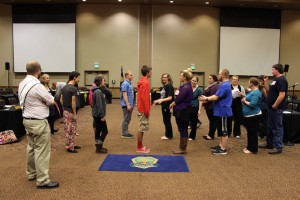The Patrons Chain – May 2016
Grange in the News
BY BETSY HUBER
National Grange Master | be***@************ge.org
 A big thank you to all Granges who held special events, awards programs, and open house meetings for Grange Month in April. I saw many news articles about Grange activities across the nation—a great way to make people more aware of the Grange and the wonderful things we do. Thank you to all for your efforts.
A big thank you to all Granges who held special events, awards programs, and open house meetings for Grange Month in April. I saw many news articles about Grange activities across the nation—a great way to make people more aware of the Grange and the wonderful things we do. Thank you to all for your efforts.
But don’t stop now that April is over! Every month can be Grange month in the news, in social media, in our lives. Keep up the good work and keep advertising what you do! Then invite your neighbors, family, friends, people you meet on the street, EVERYONE to come to your next event to help out or just to enjoy. This is how to build your Grange.
National Grange is taking a big step to help you in your publicity efforts. We have contracted with the video producer for the Public Broadcasting System (PBS) to produce a five minute “Spotlight On…” film, to be shown on hundreds of PBS stations across the country. Filming is completed, the script is receiving its final touches, and then the producer will work his magic and we will have a televised product by September. This is a costly endeavor and we are still accepting donations through the Grange Foundation toward the project. Our hope is that thousands of people will discover the Grange during our 150th year through this show and they will be calling us—and you—to join. Discuss in your Grange meetings what your response will be when you receive inquiries about your local Grange and its activities. Have a plan to welcome these interested people into your membership. You may also consider doing some local publicity in the fall to capitalize on this TV coverage. Plan now to take advantage of this opportunity to grow your Grange!
Sesquicentennial Committee Offers New Contest, Challenge to all Members
BY SHARON CROUCHER
Chair of the Sesquicentennial Committee | cr****@**tg.net
 The Grange is poised to mark two significant sesquicentennial events. This November, delegates from across the country will gather for the 150th session of the National Grange and December 4, 2017, is the 150th birthday of the Grange! Very few organizations can claim such longevity.
The Grange is poised to mark two significant sesquicentennial events. This November, delegates from across the country will gather for the 150th session of the National Grange and December 4, 2017, is the 150th birthday of the Grange! Very few organizations can claim such longevity.
It is very important that from now until December 2017 every Grange across the country take any opportunity to celebrate our rich heritage, our present achievements and our future opportunities.
We are excited to announce the major project for 2016 – a video contest open to all Grangers. The objective of the contest is to tell the Grange story in four minutes or less. The content may be a personal story or touch upon some other aspect of the Grange. There will be considerable cash prizes and the winning video will be featured at the Sesquicentennial kick-off celebration during the 2016 National Grange Convention. Watch for details and rules to be coming out in the near future. Here is your chance to show your creativity in promoting this great organization.
Also at this year’s convention, be sure to check out the historical exhibit that will be in the display room. It is being designed by T.J. Malaskee, historian and Minnesota State Grange President, and will provide a unique glimpse into our history.
The National Grange Sesquicentennial Committee is working to plan activities and to generate ideas to expand upon celebration events already underway in local and State Granges. Every Grange should be a part of our celebration and we challenge you to dig into your local and state histories for those little known but significant and interesting tidbits that are woven into the fabric of our beloved organization.
Throughout the coming months, the committee intends to provide factual materials and ideas to help Granges celebrate this momentous occasion. This information will be distributed via electronic means. We hope you will help your fellow Brothers and Sisters by providing printed copies to those who are unable to receive materials in this manner.
New Programs to be Released by Lecturer’s Department Monthly, Contest Announced
BY AMANDA LEIGH BROZANA
National Grange Communications Director | communications@nationalgrange.org
 Thanks to my time in the National Office as a staff member from 2011-14, I had a great sense of the importance of the role of Lecturer nationally and on a local and state level in the Grange, and I was keenly aware of the massive resources the Lecturer’s Department had once been able to provide to Lecturer’s and members across the country.
Thanks to my time in the National Office as a staff member from 2011-14, I had a great sense of the importance of the role of Lecturer nationally and on a local and state level in the Grange, and I was keenly aware of the massive resources the Lecturer’s Department had once been able to provide to Lecturer’s and members across the country.
From this, I drew inspiration from past Lecturer’s and Program books to provide Lecturers with sample programs that can be used in a variety of ways to either spark new activities, outreach and advocacy of local Granges.
Starting this Grange Month, I plan to release one program each month to Lecturers for use in their meetings. These are created as “programs in a box” – with all kinds of resources, tips and tools for the Lecturer to use to provide a program that fits their Grange or stretch beyond their normal approach.
The first of these programs is a prototype that looks at the town created by the New Deal under our fellow Granger, President Franklin D. Roosevelt.
It has been tested by two local Granges that are very different from one another. One is very active, with many programs that engage the public in their little town. The other has been described by the Master as “exemplifying the quiet, peaceful citizens part of our ritual,” often meeting in a member’s home or local restaurant.
Clearly, programming would be vastly different from one meeting style to another, but the outline, suggested activities and ways to engage further on the topic offered allowed each Grange to pick what they were comfortable or equipped to introduce to their membership.
Each program is created in PowerPoint, not because I expect that any Grange will have the technology or inclination to show it as such, but because it allows the key information and notes to be printed in a very easy-to-use and understand fashion. For Lecturers looking at the material at home, preparing to present in their meetings, they can link to the internet if available to get more resources that are provided or they can sometimes see and hear more information in audio or video clips embedded into the program file. There are activities such as a word search for Granges who like to have puzzles and tip sheets or fact sheets for distribution for Granges that like to have folks take something home.
For those Lecturers who shy away from computers, State or Pomona Lecturers – or State Masters – can provide a printed PDF of the PowerPoint that still gives all the necessary information, tips, engagement and advocacy options to the Lecturer without ever touching the computer.
The topics will be varied and by no means are they suggestions on policy or mission of your or any other Grange. Instead, they come from members’ suggestions, questions or areas of expertise. Often these will be created by members or committees who have agreed to assist in this endeavor, truly creating a Lecturer’s Department for full-service support.
Should you use a program created and distributed by the National Lecturer and create additional resources or materials, you can send or email them to me and we will include them on the web page dedicated to Lecturer’s programs.
To download the first program and content materials, and to find other programs as they are released, please visit vps70863.inmotionhosting.com/~nationalgrange/lecturer.
Contest
Alone, any Lecturer can only create so much, find so many experts and come up with so many ideas, but with more than 2,000 Lecturers around the country, there are innumerable opportunities for great programs to be shared around the Grange nation. For this reason, we are announcing a new contest from the Lecturer’s Department called “Lecturer’s Program in a Box.”
This contest is open to any Lecturer at any level of the Grange. Lecturers may engage other members or non-members to assist in creation of the program but must have contributed to its creation, editing and presentation. All programs should be presented at a Grange meeting before submission.
RULES
| 1. | Program must be submitted as a .ppt file by email to le******@************ge.org by October 31, 2016 or Oct. 31, 2017 for judging at the November National convention. You may choose to create this program on any presentation software, including Keynote, Prezi or others, but please convert and save to .ppt. | |
| 2. | Program must have a title slide | |
| 3. | Program must have at least 10 content slides | |
| 4. | The last slide of the program must include the name of the Lecturer who is submitting the program, the date and Grange information (name, number and state) where the program was presented and names of any contributors to the program | |
| 5. | Submission must include sample notice to the community (flyer, media alert) on how to promote the program to the broader public | |
| 6. | Program must include in .ppt or as a stand alone document at least two of the following: |
Suggested activity (during Grange meeting or directly following)
Suggested further reading/viewing list
Word search or crossword (saved as PDF)
Song lyrics, Poem or other creative work to engage audience
Video or audio clip
Fact Sheet (saved as PDF)
Game suggestion
Sample letter to elected official (as PDF)
Other tool or idea to engage audience with the presentation during the meeting or as a Grange thereafter.
Submissions & Uses
All programs submitted by the deadline will be blind-judged by a panel and all Lecturers who submit a program will receive a certificate of participation. All submissions given a “Quality” or “Outstanding” or “Exceptional” rating will be compiled into a document and distributed electronically to Grange Lecturers as an Idea Book, similar to those distributed in the 1950-70s.
JUDGING
Informative and factual (40 pts.)
Professionalism (grammar, language, approach, etc.) (15 pts.)
Interest factor (would it attract non-members to come to listen?) (10 pts.)
Interactivity/Engagement Potential (15 pts.)
Creativity in concept (10 pts.)
Reflective of Grange principles/values/issues of interest (10 pts.)
RATINGS
To receive a Quality rating, your program must have a 70 pt. or higher average across all judges
To receive an Outstanding rating, your program must have a 85 pt. or higher average across all judges
To receive an Exceptional rating, your program must have a 95 pt. or higher average across all judges
Grange Youth Actively Pinning
 BY CHARLENE SHUPP ESPENSHADE
BY CHARLENE SHUPP ESPENSHADE
National Grange Youth Director | youth@nationalgrange.org
The National Grange Youth Department is now on Pinterest. Pinterest is described as a visual web-based bulletin board where users can post and save ideas and projects, such as recipes, crafts, home decorating tips and more.
A number of State Grange Youth Directors have begun using Pinterest to develop ideas for Youth activities, leading the National Grange Youth Director Charlene Espenshade to created an umbrella Pinterest page to help because of the number of state directors looking to Pinterest to develop ideas, and gather a best-of gallery for Grangers young and less-young to use. Go to https://www.pinterest.com/grangeyouth/ to start getting ideas and engaging today!
Grange Farm School is Newest Licensee
BY DARLENE TZOU
National Grange Trademark Manager | dt***@************ge.org
 The National Grange would like to welcome a new licensee of the GRANGE marks, the Grange Farm School in Mendocino County, California.
The National Grange would like to welcome a new licensee of the GRANGE marks, the Grange Farm School in Mendocino County, California.
The Grange Farm School strives to provide experience and knowledge to the next generation of farmers through a variety of programs, including a residential farmer training program that provides hands-on experience regarding necessary agricultural production methods and skills.
The school also holds and sponsors workshops for farmers and gardeners through which it shares valuable knowledge and experience. These workshops cover a variety of topics such as seeding and planting, backyard poultry management, financial planning for the farm, and small engine repair.
Finally, true to its name as a school, this Grange Farm School also works with children and youth through schools and even hosts K-12 and community college classes.
We welcome the Grange Farm School to the Grange family and support their efforts in educating the next generation of farmers to prepare them for the challenges of a farm business and help ensure their success.
Giving can Ensure Life, Legacy of the Grange
BY AMANDA LEIGH BROZANA
National Grange Communications Director | communications@nationalgrange.org
 The National Grange is a nonprofit organization, but unlike many that you are familiar with in that it is designated at 501(c)(5) by the IRS tax code. Many charitable nonprofits are 501(c)(3)s, organizations to whom donations may be tax deductible.
The National Grange is a nonprofit organization, but unlike many that you are familiar with in that it is designated at 501(c)(5) by the IRS tax code. Many charitable nonprofits are 501(c)(3)s, organizations to whom donations may be tax deductible.
Because tax codes change, in the mid-1960s the National Grange worked to establish an affiliated 501(c)(3) organization called the Grange Foundation, which could receive and credit donations from individuals, groups and business for potential tax benefits.
Support for the Foundation, which allows greater flexibility for donors to make an impact in an area near and dear to them in the Grange, has often been an overlooked component of support for the Grange as a whole. In the coming months and years, as we celebrate and move forward from our 150th Anniversary, we hope to educate members about our Foundation, the benefits and ways of giving.
Many people wonder why it is important to give further when they already pay dues to support programs and projects of the National Grange to enhance the membership experience at the State, Pomona and Subordinate Grange level.
It’s simple.
Dues have not kept up with inflation. As an example, around 1890, some Granges – ones that thrived for many years – had members pay per meeting up to $2 per adult male and $1.25 per adult female. According to the Bureau of Labor Statistics, that would equate to $24.97 and $39.95 in 2015 U.S. dollars respectively.
Therefore, dues dollars don’t go far enough to cover everything we once were able to do and wish to do again.
With fewer members there are fewer dollars coming in to support quality programming and aid by the National Grange. Every dollar is tightly budgeted and sacrifices are made in areas that are less critical to the continuation of the organization than others.
In past years, we have chosen to reduce store inventory or discontinue positions such as the family living director at the National office so that we could cover mandatory business expenses such as bookkeeping and things that make the National Grange just that, a national organization, like a full-time legislative director/lobbyist who makes sure our members’ issues are presented to policymakers and thought leaders in Washington.
Donations to the Grange Foundation allow us to continue to do good work and provide needed resources for State and Community Granges without cutting further in other areas.
In June, look for more information from the Grange Foundation about a very popular gift option used by many nonprofit organizations – the bequest. Bequests are gifts you make provision for in your will that allow you to support charitable causes of interest without diminishing your savings while you may still require funds.

The Function of Drills in the Grange
BY BRUCE CROUCHER
High Priest of Demeter | cr****@**tg.net
 Drills have uses at different situations in the Grange. Here are some thoughts on each.
Drills have uses at different situations in the Grange. Here are some thoughts on each.
Within the degree work the drill may have an integral part such as the “Harvest March” in the third degree. Harvesters and Gleaners are the basis for this degree and their returning from the fields after a day’s work is exemplified in this drill. The candidates for this degree join with the other workers and become part of the Grange at this level. Many Granges also include drills to honor the Grace for that degree, for example the “Rose Drill” to honor Flora in the sixth degree and the Trumpet Girl Drill to honor Ceres in the seventh degree. These drills are celebratory in nature.
Within the Grange meeting itself, Granges would use a drill to seat the officers of the Grange. This type of drill would show the precision of the officers and in some cases be used as an introduction of the officers. The drill would have a similar function as the opening prayer or opening song to focus the attention of the members to the work at hand.
The drill as a competition has become popular with younger members in recent years. It offers an opportunity to apply creativity and the ability to work together as a group. The joy of being able to develop, rehearse and to perform a complex set of movements gives a sense of accomplishment for those involved. The participation and the appreciation of fellow members helps to build self-esteem in members.
Working on drills has positive value in other ways. The camaraderie that is felt when rehearsals are done and the fun of just getting together to meet with others has been important socially throughout the history of Grange. Drill gives an additional level of participation that may be enjoyable for some that are not as interested in other aspects of Grange membership. The talents used in drills is quite different that those used in conducting meetings or planning and executing fundraisers or other projects.

New 5 Volume E-book Collection of national Masters’ Addresses to be Released in Coming Weeks
BY AMANDA LEIGH BROZANA
National Grange Communications Director | communications@nationalgrange.org
 Past National Master Ed Luttrell, passionate about our Order, its history and influence over generations, has compiled a comprehensive digital collection of all addresses delivered by National Grange Masters from 1873 to 2015.
Past National Master Ed Luttrell, passionate about our Order, its history and influence over generations, has compiled a comprehensive digital collection of all addresses delivered by National Grange Masters from 1873 to 2015.
The more than 2,100 page work is an amazing collection of important and interesting speeches that provide great insight into the Grange, the landscape of rural America over the past century and a half and the American spirit.
A forward to the collection by former U.S. Secretary of Agriculture Clayton Yeutter lauds the Grange, its structure and influence. He calls the collection of addresses, “a rich array of commentary … providing a lesson in American history for all of us. And, even more importantly for most readers of this manuscript, these addresses are an invaluable lesson in the history of rural America.”
The collection has been turned into a five volume series that will be released sequentially starting in late April. Each volume will be $9.99.
If you know of any students or researchers specializing in rural America through the lens of sociology, history or political science, consider providing information to them on this must-read.
Complete, Accurate Member Information Crucial for Grange
BY STEPHANIE WILKINS
National Grange IT Manager | swilkins@nationalgrange.org
 The National Grange has spent valuable time and resources developing an online membership database designed to make management of members easy, up-to-date and fast. This user-friendly interface allows the ability to add, edit and view individual Grange and member records as well track all activities and transactions.
The National Grange has spent valuable time and resources developing an online membership database designed to make management of members easy, up-to-date and fast. This user-friendly interface allows the ability to add, edit and view individual Grange and member records as well track all activities and transactions.
Our goal is to increase participation and usage of this tool that was requested by the delegates at the 146th Annual National Grange Convention. The importance of complete and accurate member information is crucial in effectively communicating with our members. Blue Tahiti has been working hard with the National Grange to provide a custom made system that fits the unique needs of the Grange.
Adding/Editing Members
As new members join your Grange, simply add them to the membership database so that the National Grange may communicate with them via email, newsletter, etc. Our desire is to reach as many members as possible and we can do that with the help of this tool.
Membership Overview
A pie chart shows the percentage of active members, inactive members, deceased members, etc. This gives an at-a-glance view of your overall membership status. For example, a high percentage of inactive members may warrant a letter requesting that they become active again and high percentage of members dropped due to non-payment may warrant a dues notice.
Updating Officers
Changing elected officers for an individual Grange can never be easier with the new update, coming out soon. This update allows all officers of an individual Grange to be selected from a drop-down list of members. This is done all on one page, so it’s fast and easy.
Exporting Information
You can easily create a query of specific information to be exported into a downloadable file (.xls, .cvs) and used at your discretion. Grab a list of specific officers, members with an email, members with newsletter subscription, or a full membership mailing list. Just select the information you want and export it.
Quarterly Reporting
The National Grange will soon begin to implement the process of receiving quarterly report forms from State Granges via the National Grange Membership Database. The same information that is currently being submitted to the National Grange via US mail will be submitted electronically to the National Grange. However, dues payments will still be submitted by check to the National Grange.
What! We have to tear off the front wall of the Grange Hall?
BY PETE POMPPER
National Grange Community Service Director | communityservice@nationalgrange.org
 Those are the words the members of Elmer Grange #29 (NJ) were told at a meeting in September 2015. It had been noticed that the side wall of the meeting room, 40’ by 120’ room, was leaning out towards the parking lot. A structural engineer was brought in and he found the trusses had cracks and had slipped off the wall. After discussing possible solutions the only feasible choice was to immediately shut down the hall for safety reasons. A structural design firm was hired and they estimated it would cost $250,000 to properly repair the hall. The biggest challenge the Grange faced was notifying all of the community groups that used the hall for fundraisers. That’s the ugly part of the story.
Those are the words the members of Elmer Grange #29 (NJ) were told at a meeting in September 2015. It had been noticed that the side wall of the meeting room, 40’ by 120’ room, was leaning out towards the parking lot. A structural engineer was brought in and he found the trusses had cracks and had slipped off the wall. After discussing possible solutions the only feasible choice was to immediately shut down the hall for safety reasons. A structural design firm was hired and they estimated it would cost $250,000 to properly repair the hall. The biggest challenge the Grange faced was notifying all of the community groups that used the hall for fundraisers. That’s the ugly part of the story.
As Elmer Grange met and the word got out in the community, they had several non-members showing up asking how they can help rebuild the Grange. It is important to note that at no time did anyone say we can’t do this we should just sell what’s left and move. The last fundraiser held at the hall in November was a soup sale and as Jack Robinson, Elmer Grange secretary, said you could smell the soup in the kitchen and hear them tearing down the 120 feet of wall in the front of the hall. Within two weeks the roof and the sidewall were torn down leaving a shell of the former hall. Obviously the biggest concern was how are we going to pay for all of this construction and updates on the hall, no one ever said they couldn’t rather it was always how. That’s the bad part of the story.
Now the good part of the story of the rebuilding of Elmer Grange #29. We ask ourselves why do we do the community service programs? Does anyone in the community notice? Does anyone other than the members really care about the Grange and our hall? Well let’s say that in Elmer Grange’s case the community support was beyond overwhelming. One individual who had a connection through the Boy Scout troop they have sponsored for over 70 years stepped into the general contractor’s role and made things happen. He reached out to other business owners and had materials either donated or given to the Grange at cost. The electrical contractor donated all his time and materials because he knew the Grange always gave to the community but never asked for anything in return. His employees came in on their own time on nights and weekends to do the electrical work because of their connection with the Grange. They belonged to the local volunteer fire company that use the Grange Hall to hold fried oyster dinners as their major fundraisers.
What do you do with all the waste material from the demolition and construction? The local company who has dumpsters not only dropped them off but had a person there to help load them and paid all the tipping fees. The Township Committee also stepped up and helped with the permitting process and also made a monetary commitment. Members and nonmembers alike made monetary donations small and large through a special account the NG Foundation set up for Elmer Grange to use so the donors could use it for tax purposes. All of the community groups that have used the hall as part of Elmer Grange community service outreach have helped in some way.
Other than a new hall what has Elmer Grange benefitted out of this? The tangible answer is over 20 new members and a recently chartered Junior Grange. Individuals and companies have donated over $80,000 and the in kind donations from contractors have been over $75,000 to date. The nontangible answers are the support they have been shown by the community at large because as I said they really didn’t know the impact they have had on peoples lives until this occurred. The new members are as enthusiastic about the Grange as the old members are they want to be part of our organization. That was easily seen at the rededication ceremony held April 30, 2016. The Elmer Grange hall reopened on March 7th, which was 3 months and 4 days from when the first shingle was torn off the roof. To me the more heartwarming part of this is the resolve of the members who have been there for a long time. As I said to a person no one said let’s throw up our hands and quit. The pride they have shown proves to me they believe in our core values of Faith, Hope, Charity and Fidelity. This Grange has proven the lesson of Hope and Persevere can get us through tough times like this.

